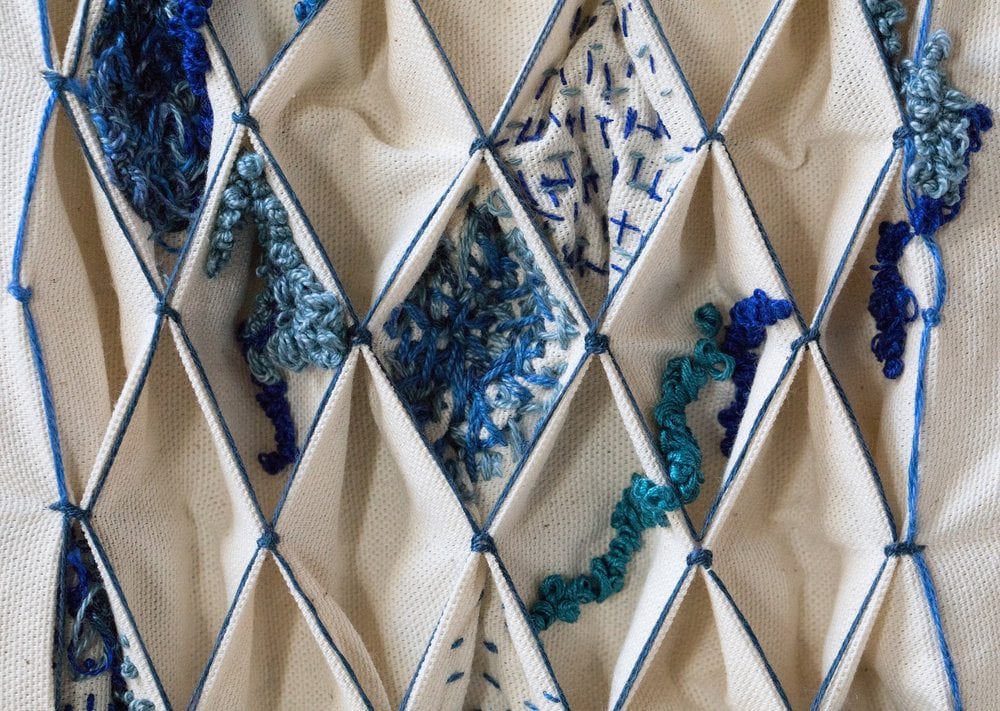

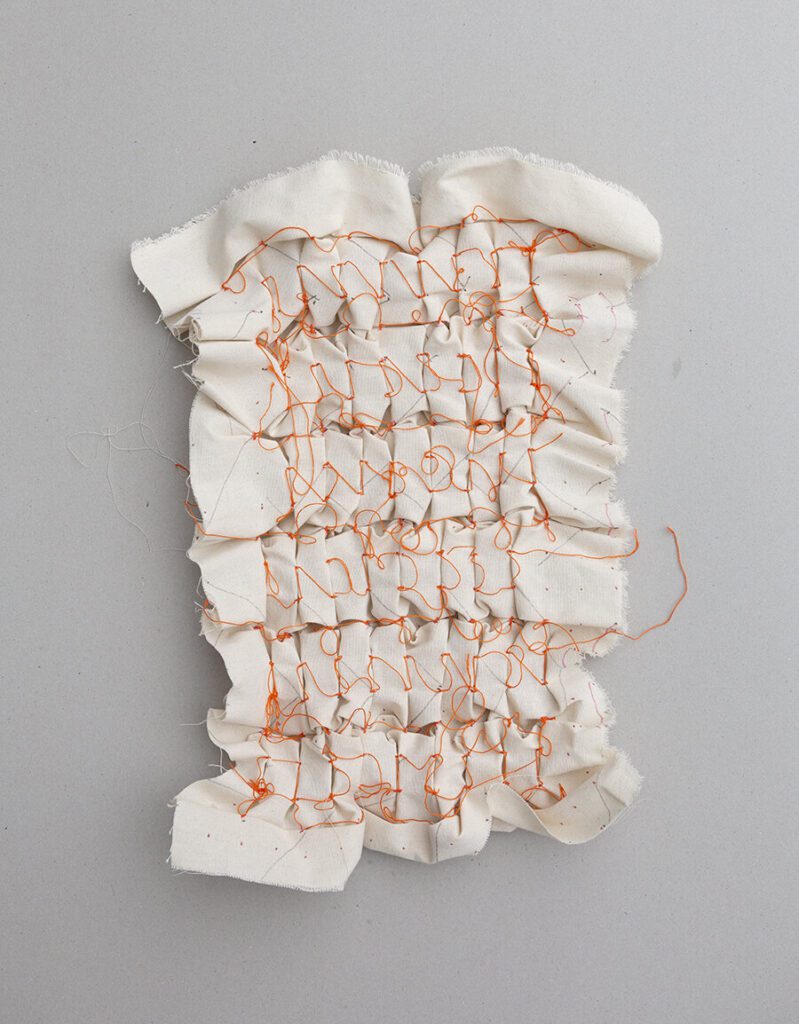
Annie Coggan’s stitched work grew out of her drawing practice. Trained as an architect, she sees the potentials for volume, structure, and depth in a flat surface, be it a floor, wall, drawing, or piece of cloth. It’s the way she thinks through and sees the planes and shapes of the world around her. Her favorite part of architecture school was creating miniature models. While for architectural projects the end result is often very large in scale, Annie finds excitement in the minute details. “It’s like my interests have gotten smaller and smaller,” she says. “Now I’m down to knots.” In her smocked cloth, the surface becomes a structure in itself. Imaginative knotting, folding, and stitching create new tactile dimensions.
Smocking was first developed for use in clothing construction, its function to cinch a garment, providing stretch, padding, and shaping. These smocking stitches and pleats are small, and typically only cover a limited section of a garment such as a bib or cuff. Annie’s smocked work, however, is large-scale. Because of this, she calls it modernist smocking. One of the first things modernist architects or makers are trained to do is assess scale. She applied modernist design practices to smocking as an exploration, playing with scale, material, color, and space to see respective impacts on the final composition.
At this scale, her smocking becomes further sculptural. Annie first measures and draws gridded patterns on the cloth to create a blueprint for subsequent folding. Small stitches pull and secure the precisely pleated cloth. When opened, new space is created. Caverns and canyons emerge in the cloth as each cell combines to form the vast textile terrain.
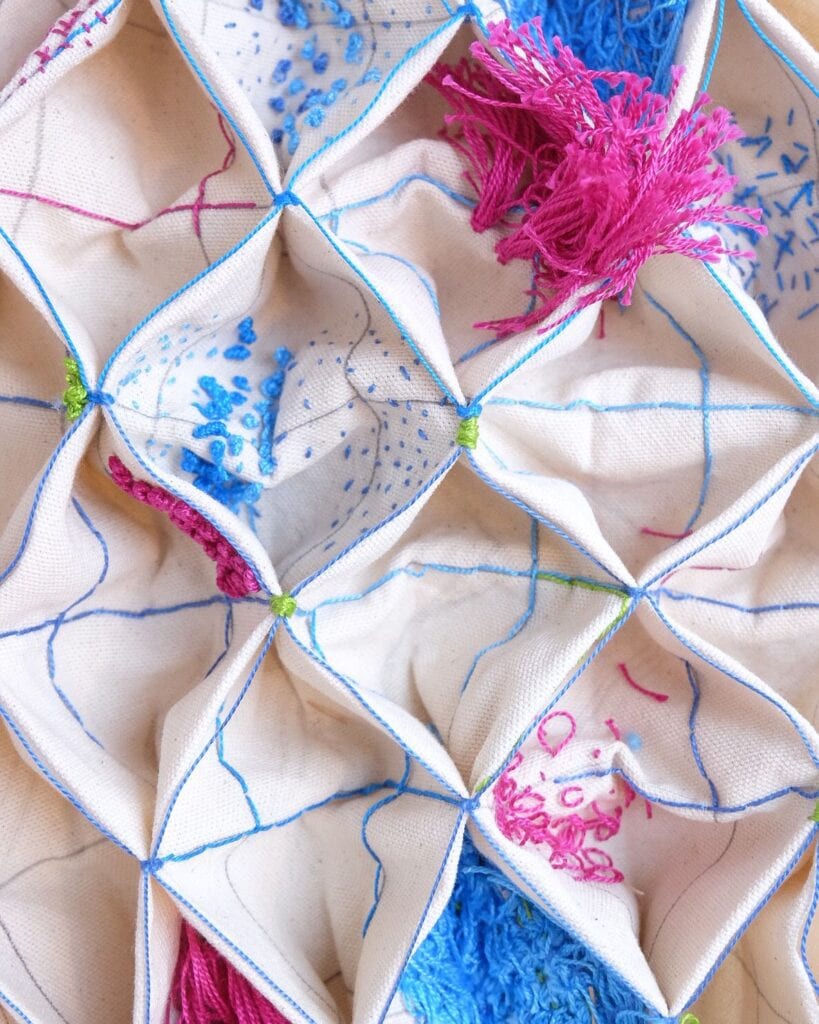
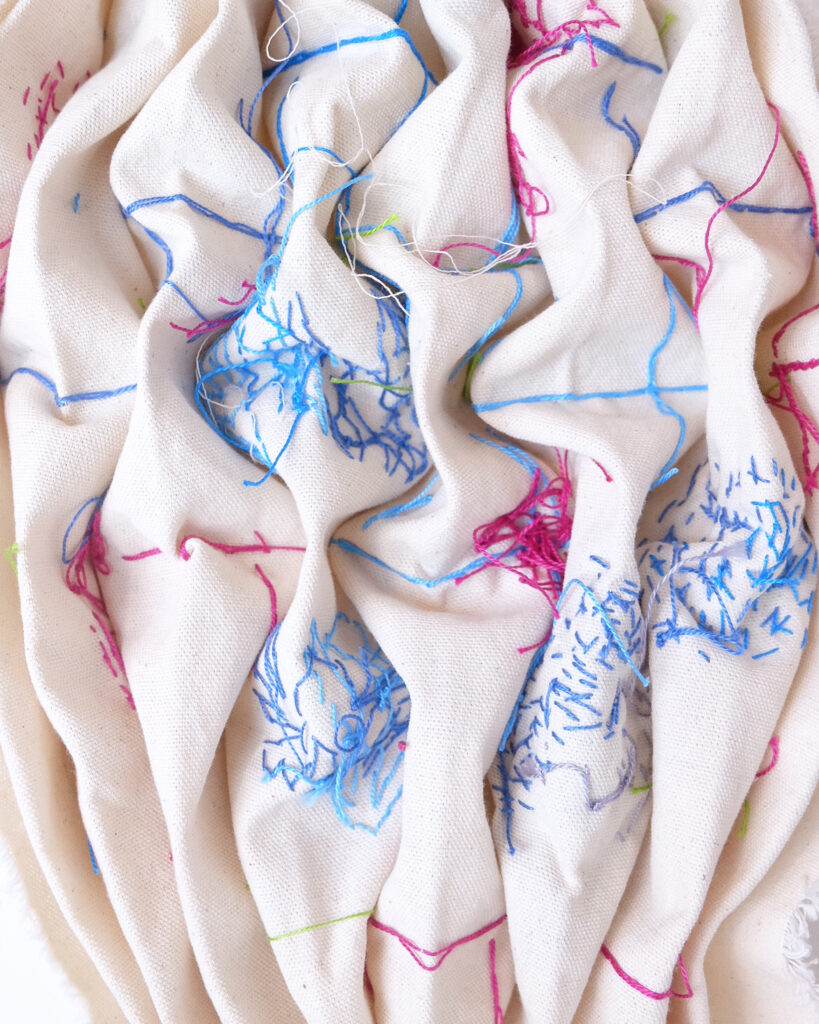
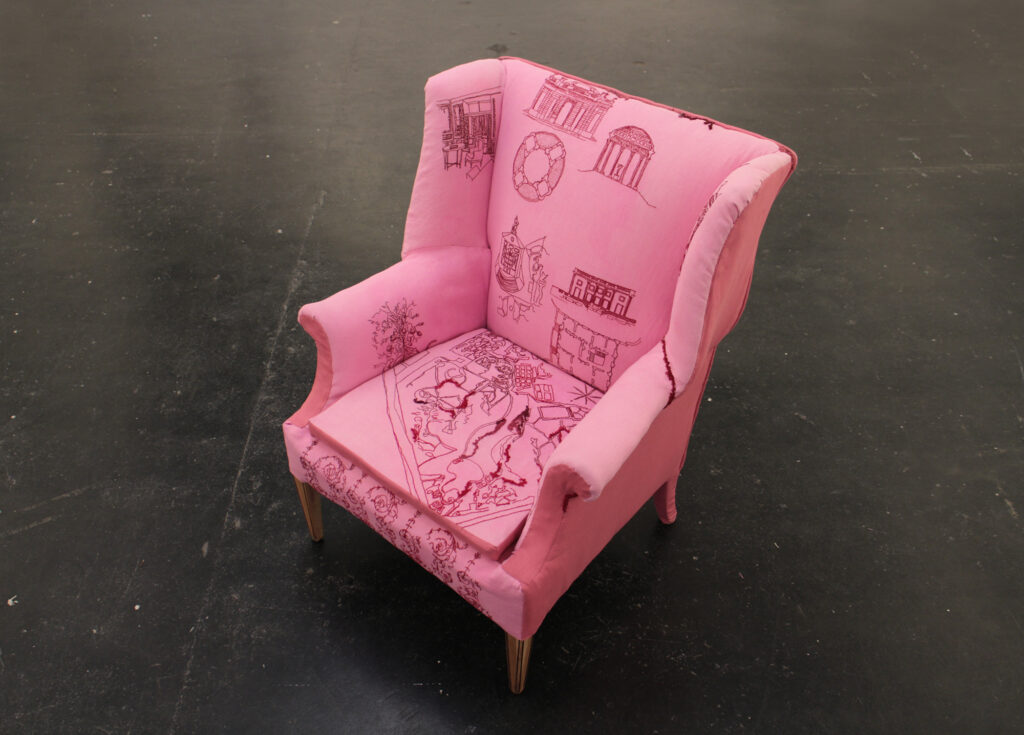
Though Annie has been smocking for six years, she has worked with embroidery for twelve. She is a designer and architect, who also works with furniture, textiles, and interior spaces. Historical investigation feeds her stitching practice. Her earlier embroidery works feature stitched maps, adorning chairs and loveseats inspired by the lives of historical figures, such as Marie Antoinette and Ulysses S. Grant. These pieces tell stories of movement and history, tracing the figures’ routes, relationships, and reflecting their lived environments. These stitched chairs are meant to be sat upon. As we sit, we are embraced by history.
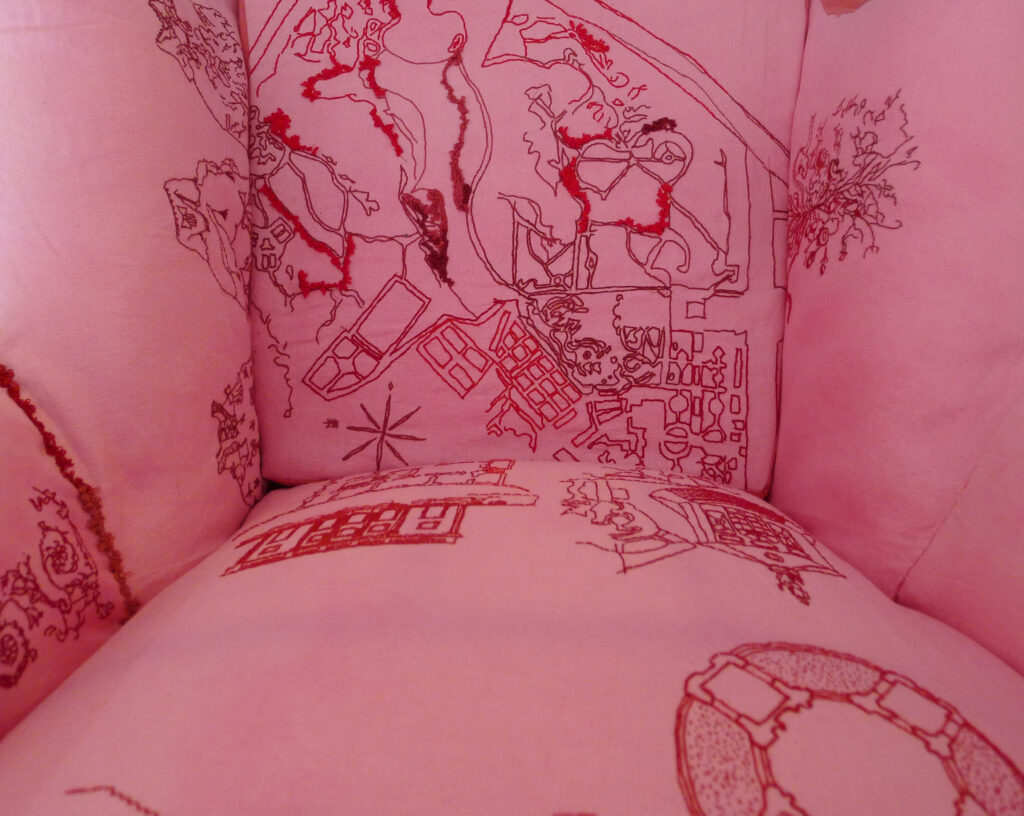

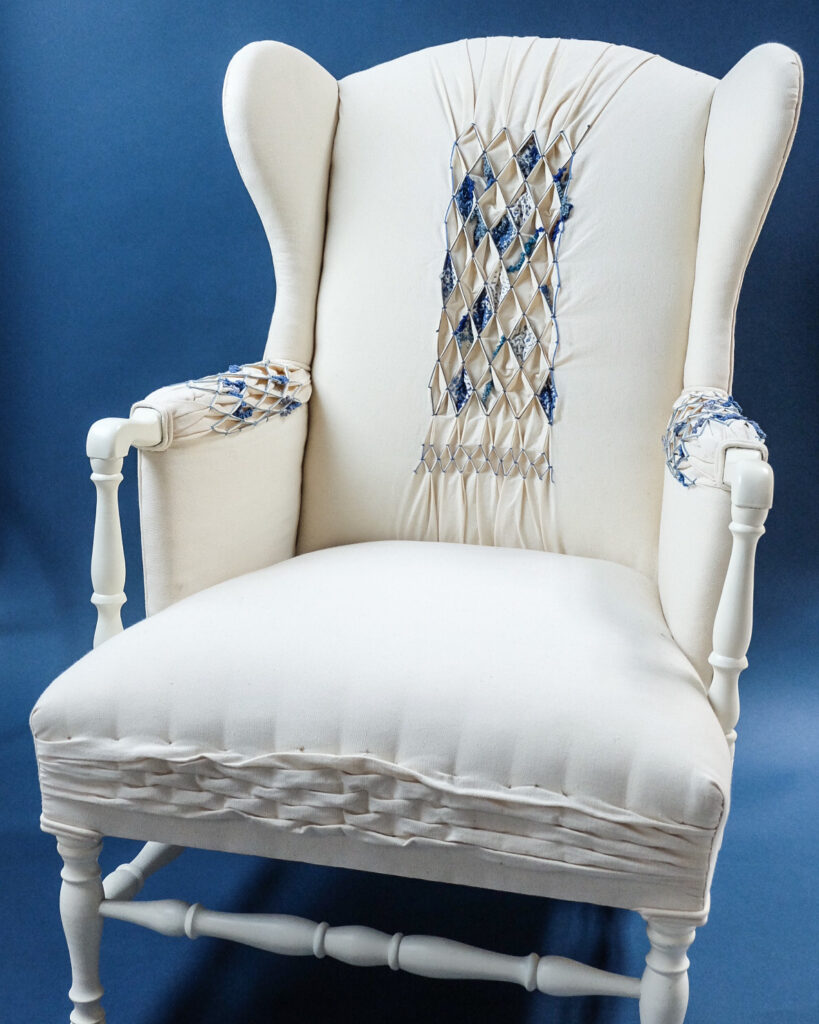
There is an inherent intimacy between us and the furniture we use and live with. Chairs hold us. They carry our weight and bend and slouch from our touch over time. These changes are inevitable, reflecting use and creating a living record of presence and interaction. Annie’s smocked chairs too present a record of time. When used, the smocking will change. Sharp pleats might soften and bend under weight. This cloth work presents another way of seeing and sensing time and history, of feeling our interactions with the world around us.
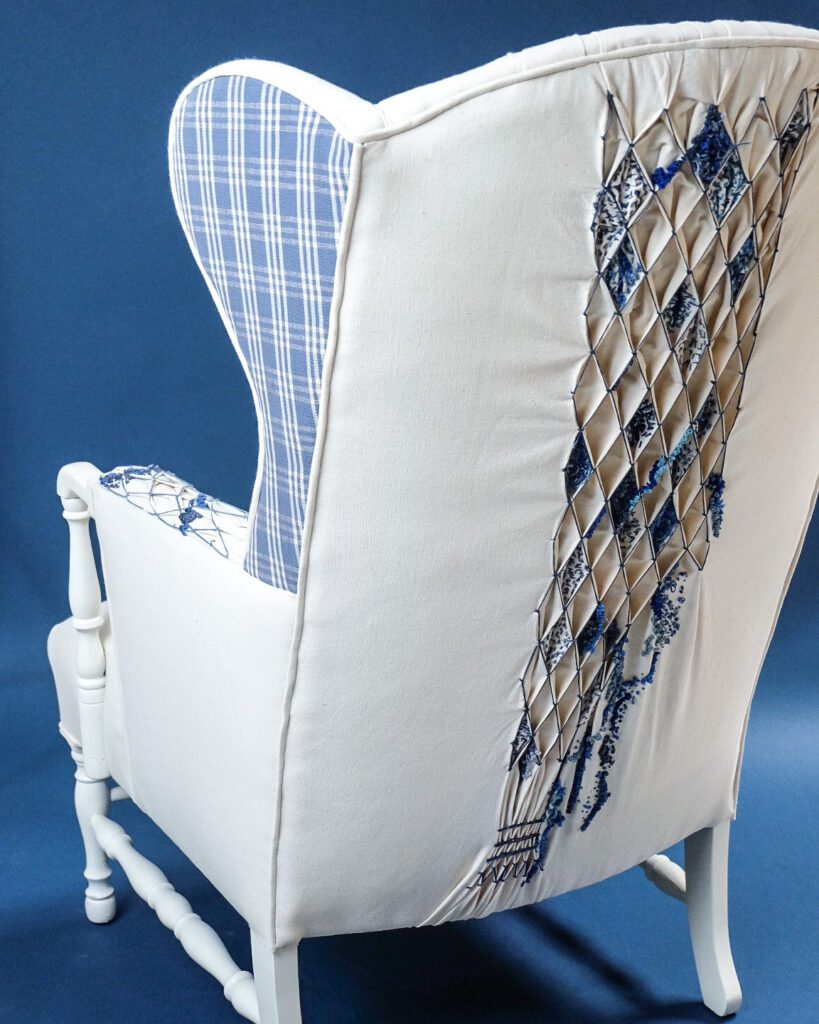
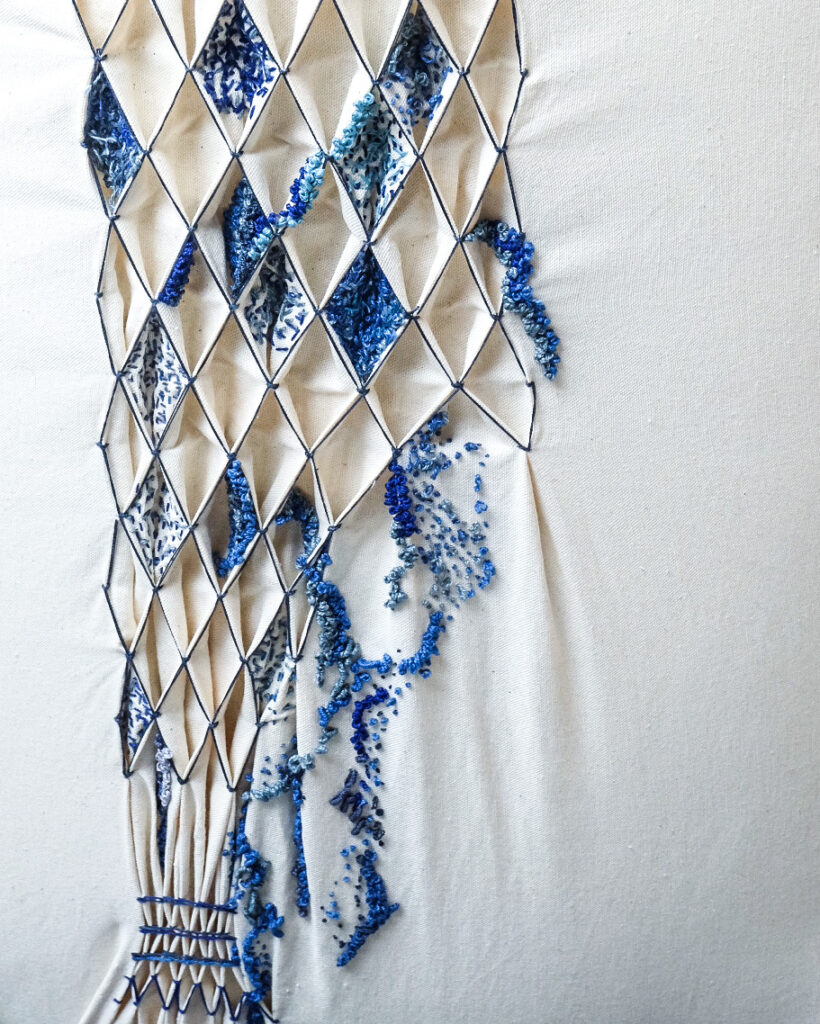
Annie will be teaching Modernist Smocking this weekend at Tatter!

Annie Coggan is a designer, artist, educator and a principal at Coggan + Crawford Architecture and Design based in Brooklyn, NY. A native of Atlanta, Georgia, Coggan received her Bachelor of Fine Arts from Bennington College in Vermont and her Master of Architecture from the Southern California Institute of Architecture (SCI-Arc), Los Angeles CA. Her work has been exhibited at A D/B Project Space (Brooklyn), Gestarc Gallery (Brooklyn), Barbara Toll Fine Arts (Manhattan), the Textile Arts Center (Brooklyn), Mississippi CAAD Visual Arts Center, and more. She has curated exhibitions at TODA (New York) and Irondale Center for the Arts (Brooklyn), amongst others. She currently is on the faculty at Pratt Institute and The School of Visual Arts in New York City. She has been featured in Furniture A+D, Journal of Architectural Education, design*sponge and Remodelista. In 2010, she was an artist in residence at the Textile Arts Center in Brooklyn. She is a contributing editor for the literary magazine A Public Space, the book reviewer for the Center for Architecture’s Book Talkseries.
